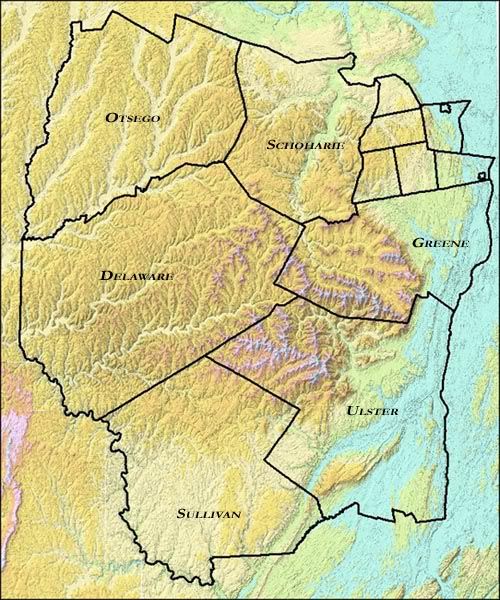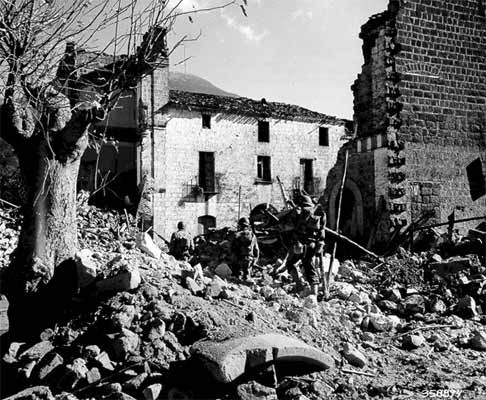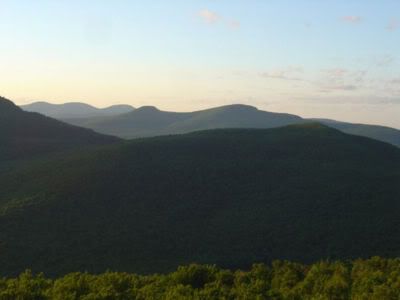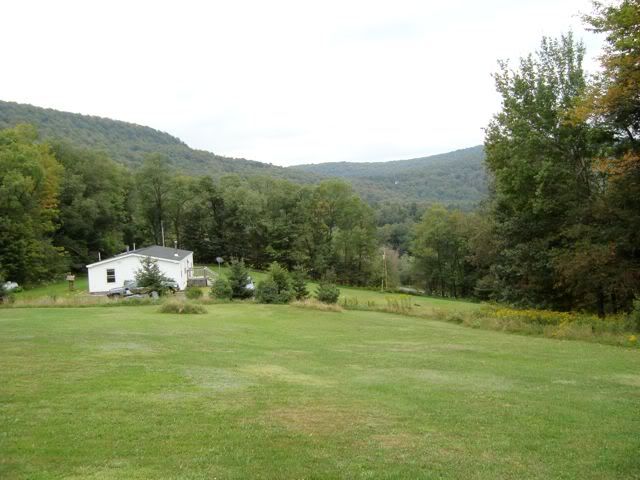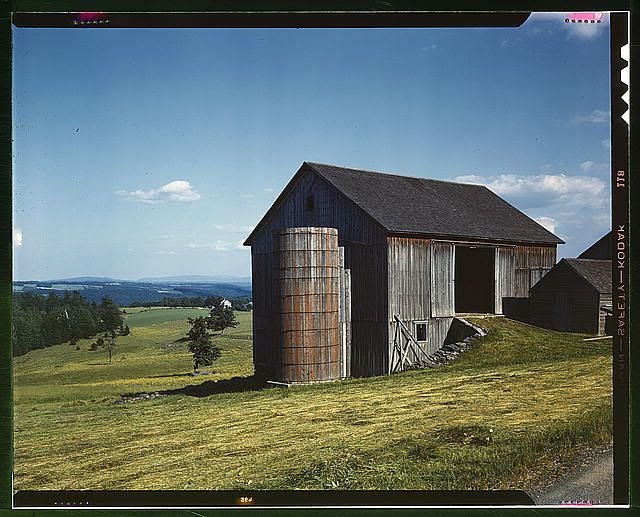
No matter which aspect of the photo is cropped and analyzed, very little would make much sense without research. Yet even without any background information, a viewer can still come up with determinations about the picture. For instance, the barn appears to be in the countryside. The bright colors and openness are signs of peace and serenity. The barn doesn’t appear to be in its heyday, but yet seems sturdy and able to withstand the weather. Now, through some background information such as the barn’s location in Sullivan County in New York’s Catskill Region, more information can be derived.
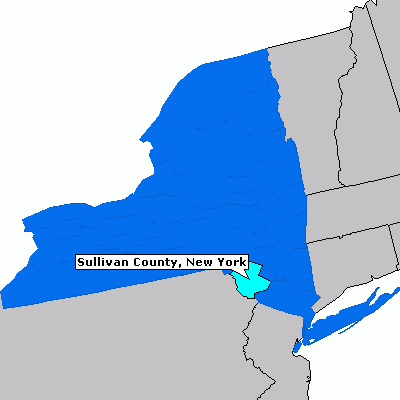
The picture was also taken in 1943, during the heat of World War II. Now, with this sort of background many more inferences can be made. One of the easiest could be the peculiarity of the barn being located in a place not famous for its good weather and during one of the greatest conflicts in human history, yet it seems unscathed and in fact, quite peaceful. An audience may be skeptical of the picture’s intentions after knowing this, being that it does seem so serene in such an awful time in history. That brings us around to what would be the purpose of a photographer to take this picture. Sure John Collier may have just stumbled onto a picturesque scene in upstate New York, but on the other hand, there may have been full intentions behind the camera click.
To fully understand the purpose and conflict behind Collier’s photography, it helps to also get a grasp on his background and influence. Collier was born in 1913 and worked for the Farm Securities Administration (FSA) and the Office of War Information between 1941 and 1943. On top of that, Collier married in spring 1943, leaving several reasons for a picture such as this. One of which is the marriage, obviously contributing to a bright context and a content feeling in a time of chaos, like that of the picture. The other reason is a bit tougher.
The FSA was aimed at boosting America’s agriculture economy since it had just been through the detriment of the Great Depression and Dust Bowl. The picture of the barn is one of the FSA pictures and obviously is going to be taken as foundation for a “stable farming economy” rather than as purely reality. A gloomy picture of a decrepit farm with dead crops and bad weather would encourage an undesirable outlook on the state of agriculture in the United States. As a comparison, observe this picture taken by Wayne Wirtanen:
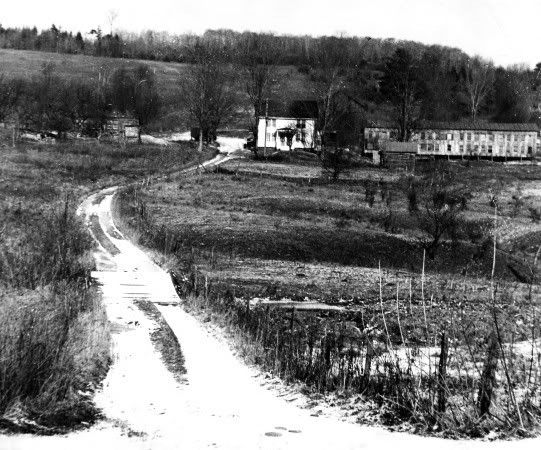
This picture was also taken in the early 1940s of a farm. Apart from being located two counties to the West of the first picture’s barn, the picture’s circumstances are quite similar. So why then are the two pictures so different? One was taken as government propaganda by a man whose soul position was to make farming and agriculture seem better than it was. The other is the reality of the time with poor crops and a rundown looking farm. In actuality, even the pristine picture could have been in much worse shape than it comes across as, but the photographer was keen to show its best side and in the best way possible. Here’s another piece of information; the picture was taken during June. Summertime on a farm is the heart of growing season, yet there doesn’t seem to be much for crops on the first picture’s farm. The green grass is likely just from natural rains and seasonal growth, but the farm itself seems to be doing very little in terms of crop production. Equally odd is how there is absolutely no farm equipment in view. The only sign of life at all is the dwindled stack of logs near the ramp into the barn.
Much of these issues are also symbolized through various elements in the picture itself. A key point, going off of the most recent statement, involves the barn’s open doorway. If the research is analyzed to accompany the picture, it is not difficult to see the darker implications within the bright outer shell, much like the barn entrance. The barn has full natural lighting on it that gives it the aura of being bright and uplifting, but should it be looked into, the darkened insides are revealed, much like the barn also has a “dark side.”
Also in regards to symbolism, take a look at the following popular large scale corporation’s logos:


Notice the arrow in the negative space between the “E” and “X” in FedEx and the yellow arrow in the Amazon logo. In FedEx, it emphasizes quickness whereas Amazon’s represents a completeness of service offered (From A to Z) as well as customer satisfaction. Though very few people ever notice these symbols in everyday passing, yet look once more at the picture of the barn taking into special consideration the silo and roof line. Undoubtedly, the end of the barn has an amazing resemblance to an arrow. Being that this picture was taken for propaganda purposes for agriculture economy, it is a logo in a sense. By incorporating an upward facing arrow, Collier is demonstrating the rise in farming as a profession without even having to dictate it. The arrow also acts as a vector of attention raising our gaze upward in the photograph toward the sky. Though the phrase may not have existed yet, the concept surely did; the sky is the limit. What better idea is there to attribute to a propaganda photograph?
In relation to the arrow, notice that both the ground to the left and the roof line to the right slope up wards toward the arrow tip. Besides just accompanying the symbol, they act as a boost to help fulfill the arrow as the focal of the photograph, even though at quick glance the entire barn appears to earn the title. Also, they can be seen as the associated problems with the industry that are falling away now that the Dust Bowl has past and the economy is rising again.
While the picture of a barn on a hill may seem like a simpler place in a simpler time, it is quite necessary to exhaust complete research on such a subject to grasp its complete meaning. Obviously there is in entire other side to the photograph than what meets the eye. It may seem as though, even after all these points, that Collier was simply taking a good looking picture, but when it comes down to a creative photographer being paid for output quality, and especially for the government, there is no limit to the extent of thought that went through his head while taking this picture. Surely after doing extended research and gathering so many background points, the simple barn is merely the theme of the photo rather than the focal point. Without a doubt, the FSA surely used this picture to the fullest extent, and rightfully so. This photograph is everything the administration could hope for in a photo. John Collier did an excellent job with this photograph and it takes much more than a simple glance to comprehend the entirety of his creativity and incorporation of symbolism.
